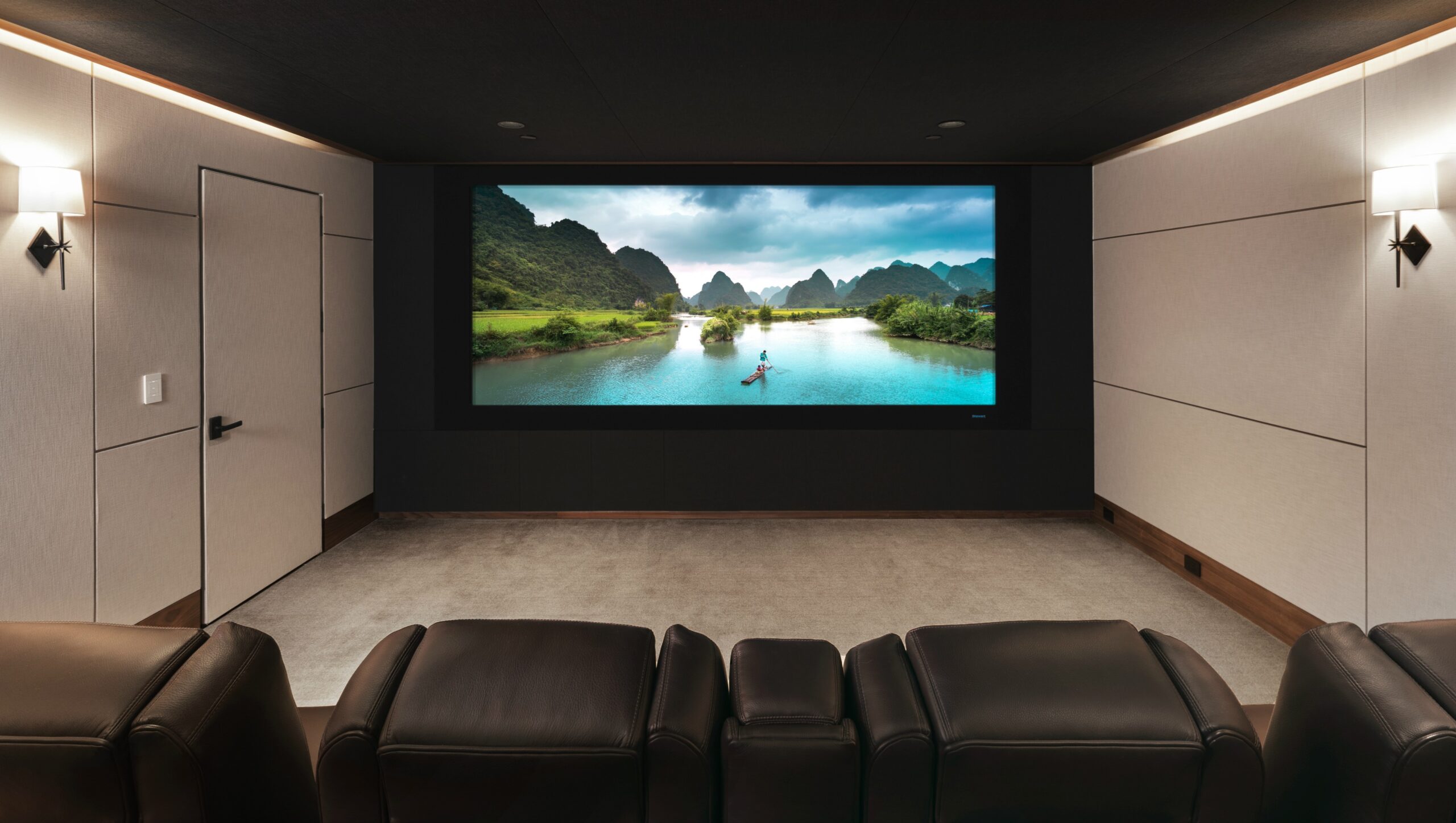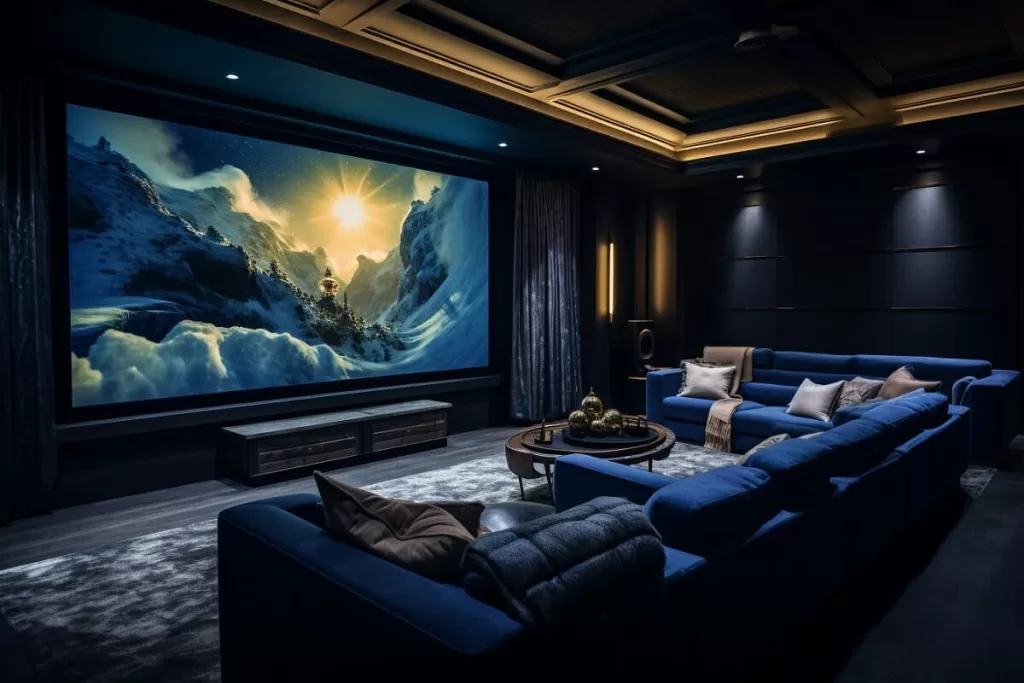Key Reasons to Choose Home Theater Tampa for Your Future Project
Key Reasons to Choose Home Theater Tampa for Your Future Project
Blog Article
Home Theater 101: Every Little Thing You Required to Know for a Motion Picture Experience at Home
Producing a home movie theater that matches the motion picture experience of a business theatre includes careful consideration of multiple parts, including display selection, stereo, and area format. Each component plays a crucial function in achieving the desired setting and capability. Whether you are contemplating the ideal screen dimension or the intricacies of border noise, recognizing these principles is vital. As we explore these essential components, it comes to be apparent that the choices made can significantly impact your total viewing experience, leaving one to contemplate just how these choices will certainly shape your individual movie theater.
Picking the Right Screen
When establishing up a home movie theater, choosing the right screen can make or damage the watching experience - home theater tampa. The screen offers as the focal point of your configuration, influencing picture top quality, checking out angles, and general visual. Trick aspects to take into consideration consist of screen resolution, dimension, and type
Initially, establish the proper screen dimension based on your room measurements and seating range. Next off, select in between different screen types, such as fixed-frame, mechanized, or retracting screens, each offering distinctive advantages.
Resolution is one more vital variable. For a truly immersive experience, consider a screen made for 4K or even 8K material, ensuring intensity and quality. Furthermore, consider the screen's gain, which impacts brightness and contrast; a higher gain can improve illumination in well-lit rooms, while a lower gain might be preferable for darker settings.
Picking Audio Equipment
Audio tools is a critical component of any kind of home movie theater system, dramatically enhancing the total watching experience. The option of audio gear can figure out the deepness, quality, and immersion of sound, crucial for developing a cinematic environment.
When choosing audio equipment, take into consideration a surround sound system, which generally includes a receiver, multiple audio speakers, and a subwoofer. A 5.1 or 7.1 channel system is recommended, where the initial number represents the audio speakers and the second the speaker, giving an immersive soundscape. The receiver is the heart of the system, handling sound and video clip signals, and must sustain modern-day styles like Dolby Atmos for an improved spatial experience.
Quality audio speakers are vital; search for versions that provide a balanced noise profile with good bass feedback. Floor-standing speakers can produce richer noise, while shelf alternatives save space. Additionally, think about wireless choices for simplicity of installment, although wired systems often deliver superior performance.

Optimal Seating Plans
Creating an optimal home cinema experience hinges dramatically on optimum seating arrangements. The arrangement of seats plays a critical role in both convenience and checking out high quality, straight affecting the general cinematic experience.
First, take into consideration the screen dimension and watching range. An usual standard is to place seats at a distance around 1.5 to 2.5 times the angled size of the screen. This makes certain an immersive experience without straining the eyes.
Next, altitude is important. If your seating remains in a tiered layout, the back rows should be more than the front to stay clear of blockages. For flat seating, make sure that the front row is not too near the screen, and that every person has a clear view.
In addition, think about the plan in regards to social dynamics. Team seats can improve the public experience, while private seats might be preferred for individual viewing.

Finally, focus on comfort with ergonomic seats that supports extended viewing durations. Incorporating reclining chairs or cushioned seats can considerably boost the experience, making the home movie theater a favored destination for both entertainment and relaxation.
Lighting and Ambiance
Reliable illumination and atmosphere are essential parts of a properly designed home movie theater, as they significantly affect the viewing experience. The appropriate illumination can boost the cinematic feel, while inadequate selections can detract more from it. For optimal results, take into consideration a split illumination method that consists of ambient, task, and accent lighting.
Ambient lighting gives general illumination, ensuring that the area is not totally dark, which can strain the eyes. Dimmer buttons are very advised, permitting for modifications based upon the web content being viewed. Task lighting, such as wall sconces or floor lamps, provides useful illumination for activities like analysis or navigating the space without interrupting the overall environment.
Accent lights can be used to highlight architectural attributes or produce focal points, including depth and interest to the area. LED strip lights behind screens or along racks can offer a subtle radiance that boosts the visual experience without frustrating the visitor.
:strip_icc()/heritage-lake-model-2524d1f5bc974300a65f3187a6ebd929.png)
Wiring and Installation Tips
A tactical circuitry setup is vital for achieving optimal efficiency in your house movie theater system. Correct circuitry not only makes certain high-quality audio and video signals but also enhances the general aesthetic of your area. Begin by drawing up your format, identifying where each component will be placed, including your screen, speakers, and receiver.
When selecting wires, focus on high-quality, appropriately evaluated circuitry to minimize signal loss. HDMI cable televisions should be utilized for video connections, while speaker cable should match the specs of your audio speakers and amplifier. Go with in-wall ranked wires to abide by safety requirements and preserve a clean appearance.

Final Thought
In summary, developing an outstanding home movie theater experience calls for cautious factor to consider of different aspects, consisting of screen choice, audio tools, seating setups, lights, and electrical wiring. Each element plays a critical function in achieving optimal efficiency and atmosphere, eventually improving the pleasure of home you could check here enjoyment. By prioritizing these aspects, a motion picture environment can be efficiently replicated, enabling immersive viewing experiences that measure up to typical movie theater settings. Attention to detail in each location is important for overall contentment.
Producing a home movie theater that measures up to the cinematic Read Full Article experience of a business theatre includes cautious consideration of several components, including screen selection, audio systems, and area design.When establishing up a home theater, choosing the ideal display can make or damage the viewing experience. Next off, pick in between numerous display kinds, such as fixed-frame, mechanized, or retractable screens, each offering distinct benefits. For a truly immersive experience, consider a screen made for 4K or also 8K web content, guaranteeing sharpness and clearness.In summary, creating an extraordinary home cinema experience needs cautious consideration of numerous components, including display selection, audio devices, seating arrangements, lighting, and wiring.
Report this page